Audi R8 Spyder gains V8 variant
Home >
News >
Audi
Recent new car releases ..... here
Upcoming new car releases ..... here
19th January, 2012
Audi Australia is adding a new variant to its R8 high-performance sports
car line-up. Hot on the heels of the R8 Spyder 5.2 FSI quattro comes an additional variant – this time with a 4.2-litre
V8 engine.
The Audi R8 Spyder’s 4.2-litre FSI produces 316 kW and launches the open-top two-seater to 100 km/h in 4.8 seconds on
its way to a top speed of 300 km/h. The engine is matched to either a six-speed manual or R tronic sequential manual
gearbox. The quattro permanent all-wheel drive system is standard.
Available only by special order, the first Australian vehicles will arrive in mid-2012, with a Manufacturer List
Price* (MLP*) of $300,400* (6-speed manual) and $316,400* (R tronic). The R8 Spyder 4.2 will feature a similarly high
level of equipment that can be found on the corresponding R8 4.2 Coupe.
|
|
|
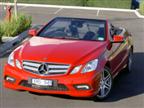
Mercedes-Benz E 350
road test
..... more
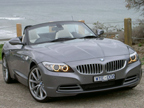
BMW Z4
road test
..... more
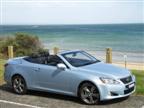
Lexus IS 250C
road test
..... more
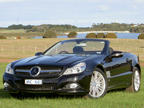
Mercedes-Benz SL 600
road test
..... more
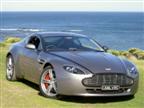
Aston Martin V8 Vantage
road test
..... more
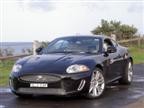
Jaguar XKR
road test
..... more
|
|
|
These include the following highlights:
- 19-inch 5-twin spoke design alloy wheels
- Audi magnetic ride
- Audi parking system advance with rear view camera
- Metallic paint
- Xenon headlights with LED daytime driving lights
- Sport seats upholstered in Alcantara leather
- Wind breaker
Superior power: the engine
The free-breathing 4.2 FSI is a high-performance engine such as can be found in racing. It delivers an experience that
enthralls all of the senses – with spontaneous, voracious throttle response, easy revving, hefty torque, prodigious power
and sonorous, voluminous 'music' from the engine's exhaust system.
The V8 accelerates the R8 Spyder from zero to 100 km/h in 4.8 seconds and on up to a top speed of 300 km/h (where
legal). Both values apply for the manual transmission and for the R tronic. At Audi, dynamics also always means
efficiency. The R8 Spyder 4.2 FSI quattro with the R tronic consumes on average 13.5 litres of fuel per 100 km. Fuel
consumption with the manual transmission is 14.4 litres per 100 km. A recuperation system that recovers energy during
braking is standard. The forced oil pump of the dry sump lubrication system features various suction and discharge stages
for load- dependent operation.
The 4.2 FSI, which is also used in this form in the R8 Coupé, produces 316 kW from a displacement of 4,163 cc. The
electronic rev limiter kicks in at 8,250 rpm. The V8 delivers 430 Nm of torque to the crankshaft between 4,500 and 6,000
rpm, with at least 90 per cent of peak torque available between 3,500 and 7,500 rpm.
The compact V8, which is hand-assembled at the engine factory in Györ, Hungary, has the classic cylinder angle of 90
degrees and weighs just 216 kilogrammes.
Dynamic: the drivetrain
The Audi R8 Spyder 4.2 FSI quattro comes with a manual six-speed transmission that works together with a compact
dual-disc clutch and can be shifted extremely precisely and easily with short throws. The shift lever is made of polished
aluminum, the open gate of stainless steel.
The R8 Spyder 4.2 FSI quattro is also available with the R tronic, a highly efficient sequential six-speed
transmission. Shift commands are transmitted electrically; a hydraulic system changes the gears and manages the clutch.
The R tronic offers both an automatic and a manual mode, both of which allow the driver to choose between two shift
programmes.
In manual mode, the driver changes gears using the joystick on the centre tunnel or with the paddles on the steering
wheel. At high load and engine speed, gear changes take less than a tenth of a second. The Launch Control programme
ensures optimal starts. It controls the engine speed and the engagement of the clutch to accelerate the open-top
two-seater with the ideal wheel slip.
The quattro permanent all-wheel drive delivers the engine’s power to all four wheels. Together with the locking
differential on the rear axle, it provides significantly greater traction, stability, cornering speed and precision. The
four powered wheels seem to claw into the asphalt at the exit of the corner, and the driver can get back on the throttle
sooner than in a car with rear-wheel drive.
Due to the mid-engine lay out, the quattro all-wheel drive system in the R8 Spyder is a special design with a strong
rear bias. The transmission, which is mounted behind the longitudinally installed V8, has an auxiliary drive for a cardan
shaft running past the engine to the front.
A viscous coupling distributes the torque at the front axle. During normal driving, it sends roughly 15 per cent of
the torque to the front wheels and 85 per cent to the rear wheels. If the rear wheels begin to slip, an additional 15 per
cent is quickly sent to the front. A locking differential at the rear axle further improves dynamics. It provides up to
25 per cent lockup when accelerating and up to 45 per cent when coasting. If a wheel on one of the axles should slip, it
is braked by the EDS electronic locking differential.
|
|
|

Self-Catering Holiday
Accommodation in
Denmark, WA
..... more
|
|
|
Just 216 kilogrammes: the body
Equipped with a manual transmission, the R8 Spyder 4.2 FSI quattro weighs only 1,660 kg (excluding driver), and just
five kilogrammes more with the R tronic. The decisive factor for this low weight is the aluminium body, which features an
Audi Space Frame (ASF) design.
The body in white consists of three wrought components: Extruded aluminium sections comprise 75 per cent; vacuum-cast
nodes 8 per cent; and the aluminium panels that are integrated into this skeleton with friction connections make up the
remaining 17 per cent. The body is largely assembled by hand.
The open superstructure features special reinforcements in the area of the sills, the centre tunnel, the rear
bulkhead, the floor and both the A and B pillars, yet still only weighs 216 kilogrammes. The high stiffness of the ASF
body, which includes a co-supporting engine frame of ultra-lightweight magnesium, provides the foundation for the dynamic
handling, superior crash safety and high vibrational comfort of the Audi R8 Spyder. The body tops its segment in terms of
lightweight quality – the relationship between weight, size and torsional stiffness.
The side panels of the open-top two-seater are made of ultra-lightweight carbon-fibre composite material (CFRP), as is
the large cover over the roof compartment.
NOTE: * Manufacturer's List Price (MLP) excludes dealer delivery fees and the numerous statutory
charges (commonly known as on-road costs). Additionally, please note that all prices, fees and charges are
subject to change without notice, as are the specifications.
|